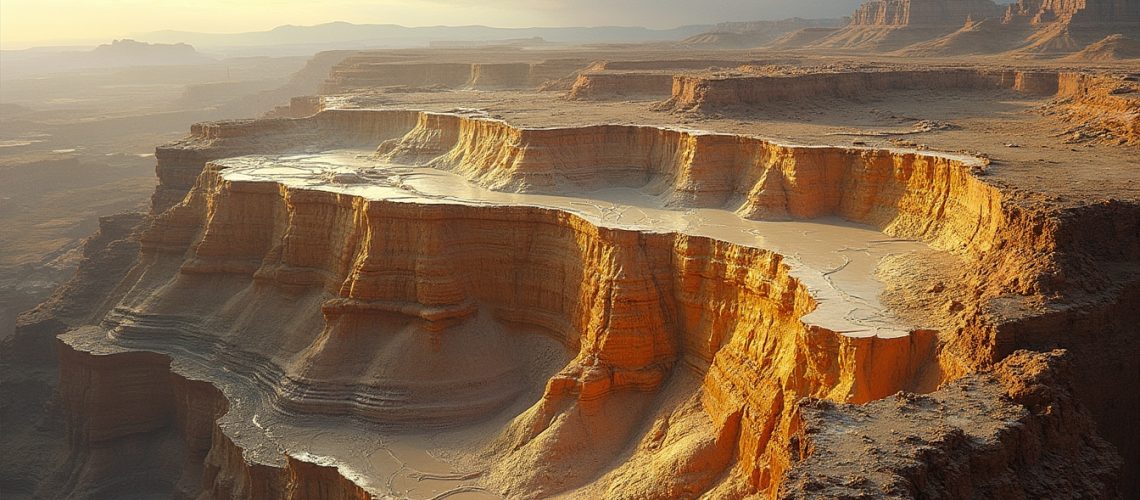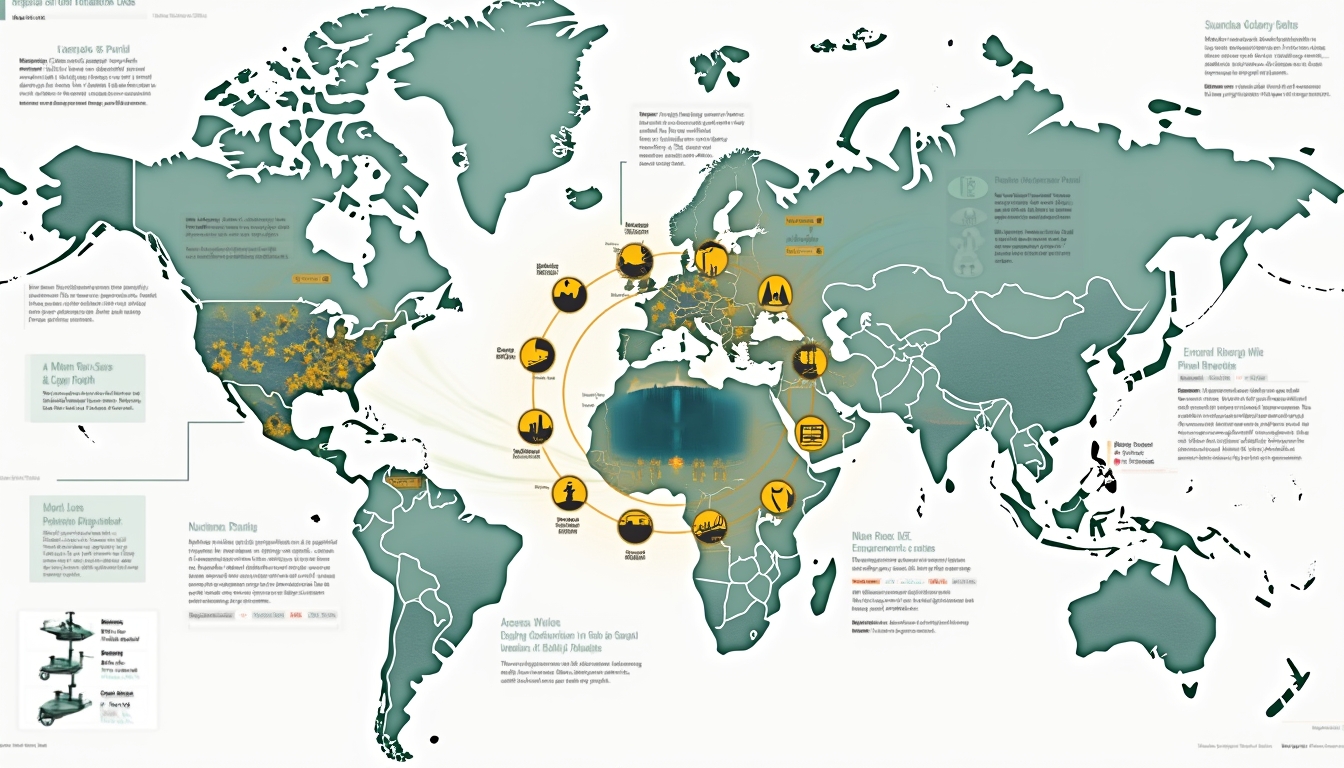Gold deposition models form the backbone of any comprehensive Geology of gold deposition models guide, offering key insights into where and how gold is concentrated within Earth’s crust. These models are fundamental for gold exploration, providing a detailed framework that helps prospectors and mining companies identify regions with economically viable gold reserves. The Geology of gold deposition models guide not only explains the processes that create these deposits but also assists in predicting locations where further exploration can yield high returns. In fact, understanding these models is critical, as it allows explorers to decipher the complex interplay between geological formations and processes, ultimately guiding them in their quest for gold.
What Are Gold Deposition Models?
Gold deposition models are scientific frameworks that describe the geological processes responsible for gold accumulation. They consider factors such as tectonic settings, types of host rocks, and the physicochemical properties of fluids that mobilise and deposit gold. The models typically focus on three primary rock types:
- Metamorphic rocks – accounting for roughly 50% of global gold deposits.
- Igneous rocks – contributing about 30% of deposits, often linked to volcanic activity.
- Sedimentary rocks – providing approximately 20% of gold reserves through erosion and re-deposition.
According to Jeff Williams, “Each region’s rock type dictates its dominant gold deposition model, making it critical to study local geology before prospecting.” This comprehensive approach is at the core of a Geology of gold deposition models guide, where every detail matters in unravelling the history and potential of gold-bearing regions.
Epithermal Systems: How Do Shallow Gold Deposits Work?
Epithermal gold systems form near the surface, usually within 2 km of Earth’s crust. These shallow deposits are separated into two main categories—high sulfidation and low sulfidation systems:
- In low sulfidation systems, neutral pH hydrothermal fluids create environments around hot springs, resulting in veins and breccia rich in quartz and gold. These systems can yield gold grades averaging 5–10 g/t, making them attractive targets for medium-scale mining. Deposits of this nature are detailed in studies on epithermal systems, where information on fluid dynamics and mineralisation is provided.
- High sulfidation systems, on the other hand, form from acidic hydrothermal fluids that typically result in lower grade deposits (1–3 g/t) but over extensive areas. An example is the Comstock Lode in Nevada, where the leached, pitted rock appearance is a common hallmark of ore enrichment.
Nevada’s thin crust enhances the migration of hydrothermal fluids, facilitating the concentration of gold in near-surface environments. For further detailed geological models on exploration techniques, consider reviewing this exploration methods document.
Mesothermal or Orogenic Gold Deposits
Mesothermal, or orogenic, gold deposits are closely associated with mountain-building events and form at greater depths in Earth’s crust. Typically found in tectonically active regions like California’s Mother Lode belt, these deposits are characterised by vertical quartz veins formed under greenschist facies conditions (300°C to 450°C). Gold is mobilised by hydrothermal fluids that traverse fault zones and fractures, depositing gold as they cool.
For a more nuanced perspective on these deposits, one can explore further details in articles on mesothermal exploration. California’s Mother Lode has generated over 50 million ounces of gold historically, with Grass Valley being a notable location where vertical quartz veins average 0.3 ounces per ton. As geologists have observed, “Orogenic deposits are derived from fluids released during major continental collisions, marking them as key indicators of tectonic activity during Earth’s history.”
The Geology of gold deposition models guide utilises insights from these orogenic processes to enhance exploration strategies. Key steps in exploring orogenic deposits include:
- Mapping regional metamorphic zones.
- Identifying faults and fractures that could channel hydrothermal fluids.
- Conducting geochemical analysis to detect trace elements associated with gold.
Intrusion-Related Gold Deposits: A Closer Look
Intrusion-related gold deposits form at the contact zones between granite intrusions and surrounding sedimentary rocks such as limestone. Here, a geological process known as metasomatism plays a pivotal role. CO₂- and silica-rich fluids interact with the host rocks, altering their mineralogy and concentrating gold in red limonite zones. These deposits typically have gold grades ranging from 2 to 5 g/t and are highly sought after due to the economic potential that lies within these altered zones.
Metasomatism not only transforms limestone by depositing minerals like hematite and calcite, but also creates geochemical anomalies that serve as significant pathfinders in gold exploration. Jeff Williams’s insights underscore the importance of this process, emphasising that “Metasomatism effectively replaces limestone with iron-rich ore, establishing strong pathfinders for gold exploration.”
Carlin Trend Deposits: What Makes Them Unique?
The Carlin trend is renowned as one of the largest gold-producing regions in the world, epitomising high-tonnage, low-grade gold mining. Gold extracted from Carlin deposits is typically refractory, with microscopic gold particles intermingled with sulphides. Extracting these minute particles requires specialised processing techniques such as roasting, which transforms sulphides into oxides, thereby liberating the gold.
The efficiency of bulk mining operations in the Carlin trend is remarkable. For instance, the Goldstrike Mine processes over 15 million tons of ore each year to yield about 1.8 million ounces of gold. Detailed insights into these operations can be gathered from studies on carlin deposits. Nielsen & Andersen (2021) report that “Bulk mining on the Carlin trend reduces operational costs by over 40% compared to traditional methods,” highlighting the economic viability of these deposits.
Porphyry Deposits: What Role Does Copper Play?
Porphyry deposits are primarily known for their copper content, yet gold is frequently present as a secondary mineral. The formation of these deposits is linked to large-scale hydrothermal processes that occur during the cooling of magma chambers. These systems are characterised by widespread, low-grade ore bodies with substantial tonnage, making them critical to large-scale mining operations.
For more detailed discussions on the interplay between porphyry systems and gold extraction, explore resources on porphyry deposits. This connection between copper and gold emphasises the importance of comprehensive geological studies that form the backbone of any effective Geology of gold deposition models guide.
Volcanic Massive Sulfides and Their Economic Importance
Volcanic massive sulfide (VMS) deposits are formed on the seafloor as a result of submarine volcanic activity. These deposits, which are rich in sulphides as well as metals like copper and zinc, pose certain challenges in gold extraction due to their refractory nature. However, the economic importance of VMS deposits cannot be understated, especially as processing technologies evolve.
To delve deeper into the characteristics and exploration potential of these deposits, consult studies on vms deposit exploration. Furthermore, modern research indicates that:
- Improved processing methods are shortening the extraction cycle.
- Advances in geochemical analysis are increasing recovery rates.
- Detailed geological mapping is optimising targeting strategies.
Iron Oxide Copper Gold (IOCG) and Telluride Deposits
Deposits such as Iron Oxide Copper Gold (IOCG) are characterised by a unique geochemical signature that highlights the interrelationship between copper and gold. Found in regions like Arizona, these deposits form in felsic igneous settings and contain high levels of iron oxide. Similarly, telluride deposits, where gold bonds with tellurium to form minerals like calaverite and sylvanite, require complex extraction techniques such as roasting. These processes demand a robust understanding of the underlying geological conditions.
Fissure Filling/Quartz Vein Systems and Their Significance
Fissure filling systems occur in fractures generated by tectonic stresses. Gold is precipitated from hydrothermal fluids that flow episodically through these voids. The resultant ribbon quartz and banding are key indicators of the dynamic geological processes at play. Mapping these stylistic veins helps geologists trace fluid pathways and predict future gold deposition.
Greenstone Hosted Deposits: The Role of Ancient Rocks
Greenstone-hosted deposits are often found in regions containing ancient granitic rocks, such as Canada’s Archean greenstone belts. In these settings, high-grade gold forms under intense metamorphic conditions. The intricate interplay between these ancient rocks and modern mining techniques makes them a subject of extensive research, contributing another critical chapter to the Geology of gold deposition models guide.
FAQ: How Do Different Rock Types Influence Gold Deposition?
- Which rock type hosts the most gold globally?
- Metamorphic rocks are responsible for approximately 50% of all gold deposits.
- Why are Carlin deposits economically viable despite low grades?
- The large tonnage and advanced processing techniques such as roasting create economies of scale.
- What challenges do high sulfidation epithermal systems present?
- Although these systems offer high tonnage, their lower gold grades require extensive, low-pressure extraction methods.
For those seeking advanced insights and comprehensive geological research, resources like this geological research document may prove invaluable.
Concluding Insights on the Geology of Gold Deposition Models Guide
A deeper understanding of the Geology of gold deposition models guide is essential for optimising gold exploration and mining operations. Key insights include:
- Recognising the dominant role of metamorphic, igneous, and sedimentary rocks in hosting gold.
- Appreciating the nuanced differences between low and high sulfidation systems, as well as the economic implications of large-scale deposits such as those in the Carlin trend.
- Implementing advanced exploration methods based on detailed mapping and geochemical analyses that incorporate modern research findings.
By integrating these geological models into exploration strategies, prospectors and investors are better equipped to assess potential sites accurately. The extensive research, detailed statistics, and expert quotes provided throughout this guide offer a robust framework for understanding where gold is likely to be found and how best to extract it. The Geology of gold deposition models guide, referenced at critical junctures in our discussion, reinforces the message that thorough geological studies and innovative extraction techniques are key drivers in the sustainable success of the gold mining industry.
This article not only provides a comprehensive overview of gold deposition models but also serves as a practical resource for those looking to advance their understanding of the processes that shape our planet’s gold reserves. With the integration of internal resources covering mesothermal, epithermal, porphyry, vms, and carlin deposit models, the guide is both exhaustive and user-friendly, ensuring that every stakeholder—from the novice geologist to the seasoned mining professional—can find valuable insights to guide their next exploration endeavour.
Ready to Uncover Gold Exploration Opportunities?
Discover the power of Discovery Alert’s real-time mineral discovery notifications, designed to simplify complex geological insights and help investors identify promising gold exploration opportunities across the ASX. Whether you’re a seasoned investor or new to mineral exploration, our AI-driven alerts provide actionable intelligence that can transform your investment strategy with a 30-day free trial.







